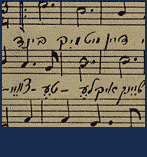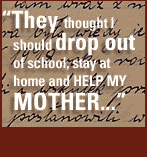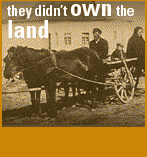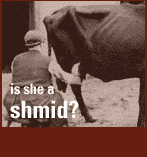

From kheder to school: from melamed to teacher.
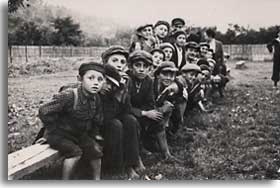

When you examine a class picture of boys or girls from the 1920s or 1930s, you might find that the hairstyles and clothes seem a bit strange. But, if you look closely at these photographs perhaps you will see the same personalities you might meet in a class today: the quiet one, the troublemaker, the dreamer, the eager student. Around this time, the question of what all these Jewish children should learn began to be answered in new and differing ways. In response to the many social changes of the 1920s, a variety of private school systems were established with the intention of shaping children in new ways. A town that in the past would have had only one school now boasted four or five school options, each with a different political and social outlook. Parents paid fees to send their children to schools that matched their ideas, which would then in turn influence the future political outlook of these children.
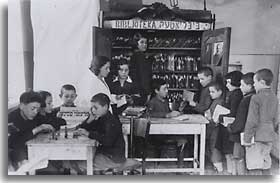

Many students started school at the age of 3 to 5 years old in the old-fashioned one-room schoolhouses known as  (Talmud Toyres in Yiddish), community sponsored schools. A large proportion of all older children, perhaps 60%, went on to free state schools, where classes were taught in Polish. These schools, known as "Szabasowka"
(Talmud Toyres in Yiddish), community sponsored schools. A large proportion of all older children, perhaps 60%, went on to free state schools, where classes were taught in Polish. These schools, known as "Szabasowka"  schools, were especially for Jews, with no classes held on Saturday. Still Yiddish was often forbidden, and students had to make the great effort to learn Polish.
schools, were especially for Jews, with no classes held on Saturday. Still Yiddish was often forbidden, and students had to make the great effort to learn Polish.
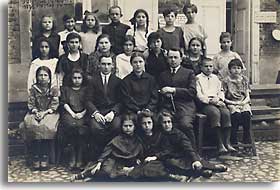

The diversity of private Jewish day schools found in Polish cities in the 1920s and 1930s cannot be matched today, even in cities like New York and Montreal with large concentrations of Jews. Yiddish day schools, which once thrived in these cities, as well as in Mexico City and Buenos Aires, are no longer common. Poland was home to several different types of school networks which these American experiments used as models: Tarbut  , TsIShO (sometimes known as CYSHO
, TsIShO (sometimes known as CYSHO  ), Yavneh
), Yavneh  and Agudas Yisroel
and Agudas Yisroel  . The Tarbut
. The Tarbut  (Hebrew for "culture") schools taught in Hebrew and emphasized Zionism, while the TsIShO
(Hebrew for "culture") schools taught in Hebrew and emphasized Zionism, while the TsIShO  (Central Jewish School Organization) schools organized by Jewish-Socialist "Bund" party, were taught in Yiddish and emphasized local Jewish culture. The Yavneh
(Central Jewish School Organization) schools organized by Jewish-Socialist "Bund" party, were taught in Yiddish and emphasized local Jewish culture. The Yavneh  school system was a more traditionally religious option, but with Zionist leanings. Parents also sent children to the Agudas Yisroel
school system was a more traditionally religious option, but with Zionist leanings. Parents also sent children to the Agudas Yisroel  schools, Khoyrev for boys and the Beys Yankev for girls. This was one of the most popular Orthodox Jewish educational options for young children before they went on to the Yeshive. After school, there was a variety of afternoon activities, from violin and piano to language lessons, which were offered to middle class students whose parents could afford the tutors. Many male adults attended afternoon or evening study groups, and some children would also be sent to study additional Torah and commentary with a private Rabbi.
schools, Khoyrev for boys and the Beys Yankev for girls. This was one of the most popular Orthodox Jewish educational options for young children before they went on to the Yeshive. After school, there was a variety of afternoon activities, from violin and piano to language lessons, which were offered to middle class students whose parents could afford the tutors. Many male adults attended afternoon or evening study groups, and some children would also be sent to study additional Torah and commentary with a private Rabbi.






